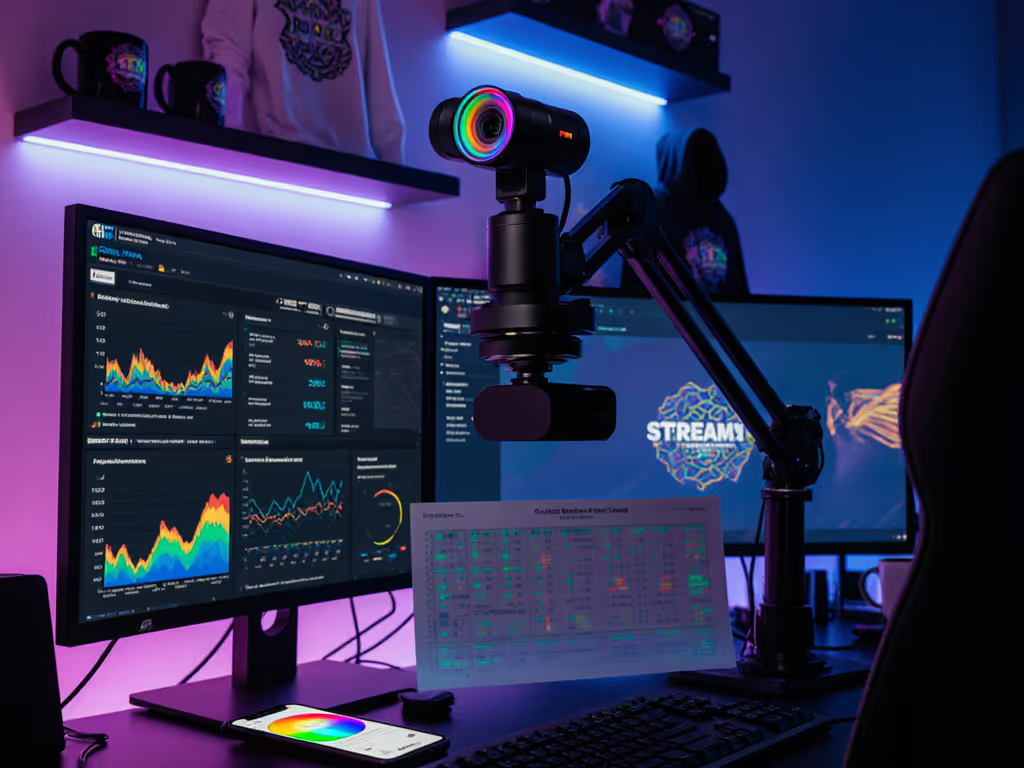
Streaming Legal Issues: Copyright Essentials for Streamers

As a creator building your brand on stream, you know visual consistency matters. But alongside color accuracy and skin tone fidelity, understanding streaming legal issues is equally critical to your long-term success. Without proper copyright for streamers knowledge, even the most beautifully calibrated stream can vanish overnight. In today's landscape where platform policies shift faster than lighting conditions, legal awareness isn't just compliance, it's foundational to building the kind of authentic, trustworthy brand that keeps viewers returning. Skin tones first, but also clarity first.
Why Legal Awareness Matters for Streamers
When I helped a creator eliminate their green cast problem through dual-illuminant white balancing, the transformation wasn't just visual, it rebuilt audience trust. Similarly, navigating copyright laws properly builds that same trust foundation. One creator I worked with lost sponsorships after unknowingly using unlicensed music during their streams, discovering too late that "accidental" infringement carries real consequences.
Unlike camera settings you can reset with a single click, copyright violations can permanently damage your channel. Consider these statistics:
- A 2024 industry report found that 73% of new streamers face at least one copyright claim within their first year
- Music-related claims account for 68% of all streaming copyright issues
- First-time offenders using unlicensed content face up to $2,500 in statutory damages per work
FAQ Deep Dive: Copyright Essentials
What are the most common copyright issues streamers face?
The biggest pitfalls stem from misunderstanding what constitutes "fair use" (a concept frequently misinterpreted in streaming circles). Many assume:
- Playing background music during streams is acceptable if they don't monetize
- Using short clips (<30 seconds) from movies or shows qualifies as fair use
- Giving credit to content owners avoids infringement
None of these assumptions are legally sound. Fair use determinations require four specific factors analyzed together, not just duration or attribution.
Copyright extends beyond music to gameplay footage, visual overlays, and even transitions. As platforms implement AI-driven copyright detection systems (like YouTube's Content ID), automated claims happen faster than manual white balance adjustments under mixed lighting.
How does music copyright work in streaming?
Music copyright streaming requires understanding two distinct rights:
- Sound recording copyright (owned by record labels)
- Composition copyright (owned by publishers/songwriters)
Most streamers focus on the first while ignoring the second. Even if you obtain permission from a musician to use their recording, you still need separate licensing for the underlying composition.
For practical streaming:
- Royalty-free music libraries remain the safest option
- Platforms like Twitch offer DMCA-safe music libraries, but only during live streams (not VODs)
- Services like Soundtrack by Twitch provide licensed music but with territory restrictions If you plan to reuse your broadcasts, see our stream repurposing guide for compliance-friendly workflows.
Remember that cryptocurrency payments or "donation-based" models don't circumvent copyright requirements, legality depends on licensing, not payment structure.
What should I know about platform terms of service?
Streaming terms of service function like your color grading LUTs (they establish the parameters within which you operate). Most creators only read these when they've already violated a clause.
Key considerations:
- Content ownership: Most platforms claim broad licenses to your stream content
- Community guidelines: Often stricter than copyright law (e.g., prohibiting certain gestures or symbols)
- Monetization requirements: Specific thresholds and content restrictions for earning revenue
- Archive policies: How long VODs remain available and under what conditions
A 2025 update across major platforms now requires explicit disclaimers when streaming certain game genres, particularly those with real-world brand placements. Treat platform TOS like your reference chart, check it regularly for version updates that might shift your operational boundaries.
What privacy considerations apply to streaming?
Privacy considerations extend beyond your on-camera appearance. When streaming from home:
- Background content (TV shows, artwork, books) may violate copyright
- Capturing identifiable people without consent creates GDPR/CCPA issues
- Location data in stream metadata can reveal personal information
Professional streamers increasingly use blurred backgrounds not just for aesthetics but as a privacy safeguard. Just as I map color controls to predictable skin tones, map your streaming environment to predictable privacy boundaries, know exactly what enters your frame.
What disclaimer requirements do I need?
Disclaimer requirements have evolved significantly in 2025. Essential disclaimers now include:
- Music disclaimers: "All music used with proper licensing through [service]"
- Sponsorship disclosures: FTC-mandated clear identification of paid partnerships
- Game content notices: Required for certain publishers' titles (e.g., "This stream uses content from [Publisher] protected by copyright")
- Archiving statements: Notification if VODs will be retained beyond standard periods
Unlike color calibration files that you can save and reuse, disclaimer requirements vary by platform and content type. Create a checklist like your streaming setup routine, verify disclaimers before every broadcast.
Building Legal Resilience into Your Workflow
Just as I help creators document their color pipelines for quick recovery, build legal checkpoints into your streaming routine:
- Pre-stream checklist (like white balance verification)
- Music licensing status confirmation
- Current platform TOS review (changes happen weekly)
- Background content clearance
- Required disclaimers prepared
- Documentation system (your legal reference chart)
- License agreements organized by date and platform
- Screenshots of permissions
- Music tracking spreadsheet with timestamps
- Response protocol for claims (like your green cast emergency fix)
- Where to find platform appeal forms
- Contact information for your music provider
- Template responses for common issues
The creators who thrive aren't those who avoid legal issues entirely, they're the ones prepared to address them quickly and transparently, just like handling a sudden lighting shift during broadcast. This consistency builds the trust that turns casual viewers into loyal community members.
Final Thoughts: Consistency Beyond Color
Navigating streaming legal issues requires the same disciplined approach as perfecting your visual presentation. Just as I've helped creators transform inconsistent skin tones into a recognizable brand signature, proper copyright management transforms your channel from temporary entertainment to lasting enterprise.
Color you can trust, even when the platform policies disagree. That's the foundation of sustainable streaming success.
For further exploration, review the U.S. Copyright Office's Streamer Resources page, which provides scenario-based guidance updated quarterly. Understanding these legal frameworks won't replace your signature look, but it will ensure that look remains visible to your audience for the long term.
Related Articles

